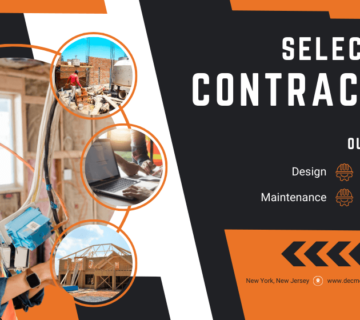Running a successful franchise requires careful attention to your building’s infrastructure, particularly the mechanical, electrical, and plumbing (MEP) systems. After working with numerous franchise owners and facility managers, I’ve identified five key engineering improvements that can transform how you manage franchise MEP projects across your locations.
1. Standardize Your MEP Systems
Think about major hotel chains – walk into any of their locations, and you’ll find consistent HVAC performance, reliable electrical systems, and similar plumbing configurations. This isn’t by accident. Standardization is the secret sauce that makes managing multiple locations significantly easier.
Here’s what standardization looks like in practice:
- Develop a core MEP design template that works across different building sizes
- Create detailed specifications for HVAC, electrical, and plumbing systems
- Build flexibility into your standards to accommodate local building codes
- Document installation procedures that contractors can follow consistently
A franchise owner I worked with recently saved 30% on design costs and cut installation time by two weeks after implementing standardized MEP systems across their locations. The key was creating detailed yet flexible specifications that could adapt to different building layouts while maintaining core consistency.
2. Embrace Building Information Modeling (BIM)
Remember the days of shuffling through stacks of 2D drawings to resolve construction conflicts? BIM technology has revolutionized how we handle MEP coordination. Instead of discovering problems during construction, we can now identify and solve issues before breaking ground.
BIM brings three game-changing benefits to franchise operations:
- Virtual walk-throughs of MEP systems before installation
- Automatic clash detection between different systems
- Digital records for future maintenance and renovations
One of my clients avoided $50,000 in rework costs on a single location by identifying HVAC-plumbing conflicts during the BIM review phase. That’s the power of seeing your building systems in 3D before installation begins.
3. Integrate Smart Building Technologies
The Internet of Things (IoT) has transformed MEP system management from reactive to proactive. Modern franchises are installing smart sensors and controls that provide real-time insights into system performance.
Smart building technologies can:
- Monitor HVAC performance and adjust settings automatically
- Detect water leaks before they cause damage
- Track energy usage patterns to optimize efficiency
- Enable remote system monitoring and control
A restaurant franchise I consulted for reduced its energy costs by 25% after implementing smart controls and monitoring systems. Their facility managers now receive early warnings about potential equipment failures, allowing them to schedule maintenance during off-hours.
4. Prioritize Energy Efficiency
Energy costs can make or break your franchise’s profitability. Modern MEP systems offer impressive opportunities for reducing energy consumption while improving performance. Consider these proven strategies:
- Install high-efficiency HVAC systems with smart controls
- Upgrade to LED lighting with occupancy sensors
- Choose water-efficient plumbing fixtures
- Consider renewable energy options where feasible
Real-world example: A retail franchise implemented these improvements across 20 locations and saw its average utility bills drop by 35%. The initial investment paid for itself within three years through reduced operating costs.
5. Centralize Your Procurement Strategy
Managing vendors and purchases across multiple locations can be a logistical nightmare. A centralized procurement strategy simplifies everything while reducing costs. Here’s how to make it work:
- Select preferred vendors for major MEP components
- Negotiate volume discounts for standardized equipment
- Establish consistent maintenance service agreements
- Create a central inventory management system
One multi-location franchise reduced its MEP maintenance costs by 40% simply by consolidating its vendor relationships and standardizing its equipment specifications.
Looking Ahead
Managing Franchise MEP Projects’ future is to incorporate these upgrades into a total strategy. Begin by making standardization the foundation, so everything is consistent at all locations. Roll out BIM, smart technologies, effective energy systems, and centralized purchasing incrementally to gain increased performance and cost savings. There is no need to replace everything at once – prioritize upgrading the most critical improvements with the greatest return on investment and incrementally build an effective system for your own specific franchise needs.
How to Implement Engineering Improvements in Your Franchise MEP Projects
Enhancing your franchise’s MEP systems requires a well-structured plan. Follow these steps to successfully implement the five key engineering improvements:
- Evaluate Existing Systems:
Conduct a detailed inspection of your current MEP systems across all franchise locations.
Identify outdated equipment, inefficiencies, and recurring maintenance issues. - Develop a Standardization Plan:
Collaborate with experienced MEP engineers to create design templates for HVAC, electrical, and plumbing systems.
Customize the templates to comply with local codes while maintaining core design consistency. - Adopt BIM Technology:
Choose the right BIM software to create 3D models of your franchise locations.
Work with BIM experts to identify system clashes before construction begins.
Use BIM models for ongoing system documentation and future upgrades. - Integrate Smart Building Systems:
Install IoT-based sensors and controls to monitor HVAC, plumbing, and electrical systems in real time.
Use automated alerts and remote monitoring tools to address potential issues before they escalate. - Optimize Energy Efficiency:
Replace outdated systems with energy-efficient HVAC units, LED lighting, and low-flow plumbing fixtures.
Implement energy management software to track usage patterns and optimize performance. - Monitor and Improve:
Regularly review system performance and energy usage data.
Adjust operational procedures to maximize efficiency and minimize costs.
Continuously update standards and technology as new innovations become available.
Frequently Asked Questions (FAQs)
Standardizing MEP systems ensures consistent quality, performance, and easier maintenance across all franchise locations. It reduces design costs, installation time, and long-term operational expenses by streamlining processes and eliminating variability.
BIM provides 3D digital models of MEP systems, enabling virtual walkthroughs, clash detection, and better coordination between different systems. This helps identify and resolve issues before construction begins, saving time and reducing costly rework.
Smart building technologies like HVAC performance monitors, water leak detectors, energy management systems, and remote control devices help optimize energy efficiency, prevent damage, and reduce operational costs through proactive maintenance.
Energy-efficient systems lower utility bills, improve building comfort, and reduce environmental impact. Solutions like high-efficiency HVAC systems, LED lighting, and water-saving plumbing fixtures can significantly cut operating costs over time.
Centralized procurement simplifies vendor management, ensures consistent equipment quality, negotiates better pricing, and reduces maintenance costs by establishing long-term agreements with trusted suppliers.





No comment